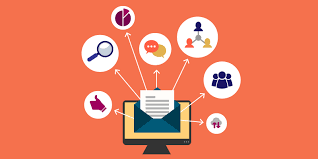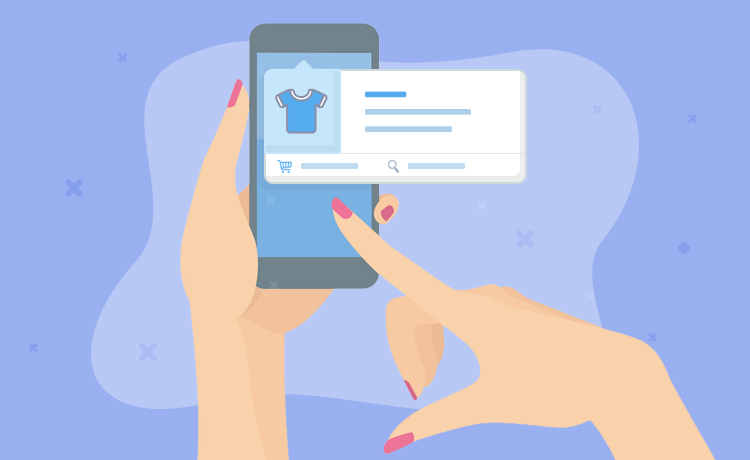Hello!
 In the fast-paced digital landscape of 2025, where customer retention rates directly impact business growth, re-engagement notifications have emerged as a powerful strategy to reconnect with inactive users. These personalized messages, delivered via email, push notifications, or in-app alerts, serve as gentle reminders of your brand’s value, sparking renewed interest in your products or services.
In the fast-paced digital landscape of 2025, where customer retention rates directly impact business growth, re-engagement notifications have emerged as a powerful strategy to reconnect with inactive users. These personalized messages, delivered via email, push notifications, or in-app alerts, serve as gentle reminders of your brand’s value, sparking renewed interest in your products or services.
Unlike generic marketing blasts, re-engagement notifications are tailored to individual preferences and behaviors, offering special deals, cart reminders, or curated content. When executed thoughtfully, they can boost retention rates—crucial when retaining a customer costs up to 5 times less than acquiring a new one.
This article explores why re-engagement matters, best practices for crafting effective notifications, and how to measure their success.
The Importance of Customer Re-Engagement
Re-engaging inactive customers is a cornerstone of sustainable business growth.
 Here’s why it’s a priority in 2025:
Here’s why it’s a priority in 2025:
- Cost Efficiency: Retaining existing customers is far cheaper than acquiring new ones. Studies show businesses spend 60–70% less on retention than acquisition, maintaining steady revenue with less marketing spend.
- Revenue Growth: Loyal customers purchase more frequently and spend 31% more on average than new ones, driving consistent income.
- Brand Advocacy: Satisfied, re-engaged customers become promoters, with 83% of loyal customers recommending brands to others, amplifying word-of-mouth marketing.
- Competitive Edge: High retention rates—top companies achieve 75–90% annually—make it harder for competitors to lure your audience.
With 60% of customers disengaging after 6 months of inactivity, re-engagement notifications are a proactive tool to keep your brand top-of-mind.
Strategizing Your Re-Engagement Efforts
 Effective re-engagement starts with a clear strategy:
Effective re-engagement starts with a clear strategy:
- - **Identify Inactive Users**: Use analytics to segment customers based on behavior—e.g., those who haven’t purchased in 90 days or abandoned carts. Prioritize high-value customers or those at risk of churn.
- Define Goals: Are you aiming to boost sales, recover lapsed users, or enhance loyalty? Clear objectives shape your messaging.
- Optimize Timing: Analyze user activity patterns to determine the best times for notifications. For instance, retail brands see 20% higher engagement with evening push notifications in 2025.
The Role of Push Notifications in Re-Engagement
Push notifications, sent via apps or browsers, are a direct and engaging way to reach customers. In 2025, 70% of smartphone users enable push notifications, making them a key channel for re-engagement. Automated tools leverage analytics and AI to deliver personalized messages, such as cart reminders or exclusive discounts, without feeling intrusive. For example, a notification like “Your favorite sneakers are back in stock!” can rekindle interest, especially when timed with user activity peaks.
Best Practices for Crafting Re-Engagement Notifications
 To maximize impact, follow these best practices:
To maximize impact, follow these best practices:
- Personalization: Use customer names, reference past purchases, or highlight browsed items. Personalized notifications see 30% higher open rates than generic ones.
- Clear Messaging: Keep content concise and focused. A message like “We miss you! Enjoy 15% off your next order” is direct and compelling.
- Strong Call-to-Action (CTA): Use action-oriented CTAs like “Shop Now” or “Claim Your Offer” to drive immediate responses. CTAs boost click-through rates by 25%.
- Value Proposition: Highlight benefits, such as exclusive deals or new features, to show customers what they’re missing.
- Balanced Frequency: Avoid spamming—1–2 notifications per week strike the right balance, preventing annoyance while staying relevant.
- Segmentation: Group customers by behavior or preferences (e.g., frequent buyers vs. lapsed users) for targeted campaigns.
Timing Your Notifications Right
Timing is critical for re-engagement success. Sending a notification too early risks seeming pushy, while waiting too long may lose the customer entirely. Analyze data to identify optimal moments — e.g., sending a cart abandonment reminder within 24 hours increases conversion by 15%. Test different schedules (e.g., morning vs. evening) and adjust based on response rates. In 2025, AI-driven tools like Customer.io or Braze predict the best times by analyzing user habits, ensuring notifications land when customers are most receptive.
Personalization: The Key to Success
Personalized notifications resonate deeply, transforming generic nudges into meaningful connections.
 Here’s how to personalize effectively:
Here’s how to personalize effectively:
- Use Customer Data: Include names or reference past interactions (e.g., “John, your wishlist item is on sale!”).
- Leverage Behavior: Tailor messages to browsing history or app usage, like offering discounts on frequently viewed products.
- Offer Relevant Incentives: Provide deals aligned with preferences—e.g., a book lover gets a discount on new releases.
- Show Appreciation: Send thank-you notes or loyalty rewards (e.g., “Celebrate 1 year with us with 20% off!”).
Personalized campaigns yield 6x higher transaction rates, making them essential for re-engagement.
Measuring the Success of Re-Engagement Notifications
 To gauge effectiveness, track these key metrics:
To gauge effectiveness, track these key metrics:
- Open Rates: High opens (above 20%) indicate compelling subject lines or push messages.
- Click-Through Rates (CTR): A CTR above 5% shows notifications drive engagement.
- Conversion Rates: Measure actions like purchases or app re-downloads (aim for 2–3% for retail).
- Retention Rate: Compare pre- and post-campaign retention to assess long-term impact.
Use tools like Mixpanel or HubSpot to monitor these metrics and refine your strategy. A/B testing different messages or timings can further optimize results.
Final Takeaway: Building Trust Through Re-Engagement
 Re-engagement notifications are more than reminders—they’re opportunities to rebuild trust and loyalty. Craft messages that are personal, timely, and value-driven to show customers you understand their needs. Avoid over-notifying; instead, aim for a cadence that keeps your brand relevant without being intrusive. Respect privacy by offering clear opt-out options and ensuring compliance with data regulations like Singapore’s PDPA or GDPR. By blending personalization, strategic timing, and consistent monitoring, re-engagement notifications can transform inactive users into loyal advocates, driving growth and retention in 2025’s competitive digital landscape.
Re-engagement notifications are more than reminders—they’re opportunities to rebuild trust and loyalty. Craft messages that are personal, timely, and value-driven to show customers you understand their needs. Avoid over-notifying; instead, aim for a cadence that keeps your brand relevant without being intrusive. Respect privacy by offering clear opt-out options and ensuring compliance with data regulations like Singapore’s PDPA or GDPR. By blending personalization, strategic timing, and consistent monitoring, re-engagement notifications can transform inactive users into loyal advocates, driving growth and retention in 2025’s competitive digital landscape.
Thank you!
Join us on social media!
See you!






